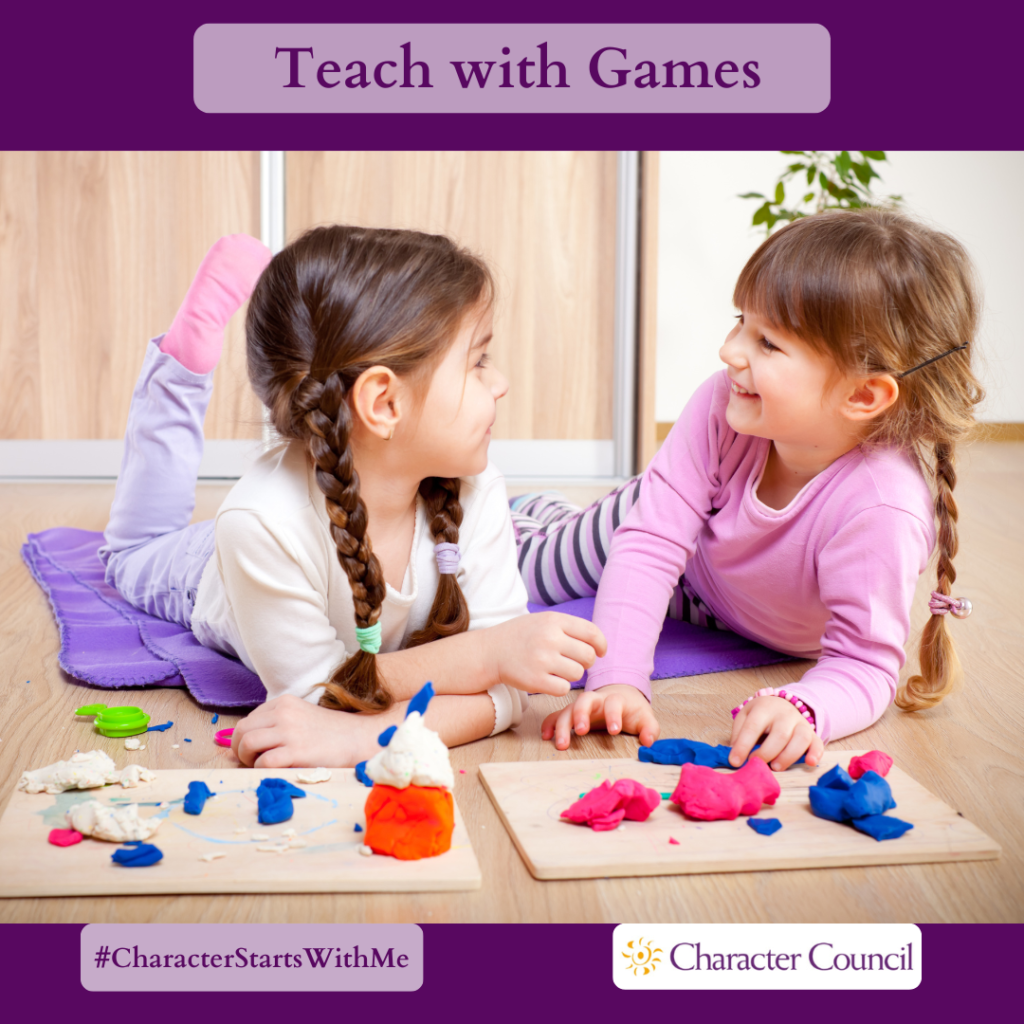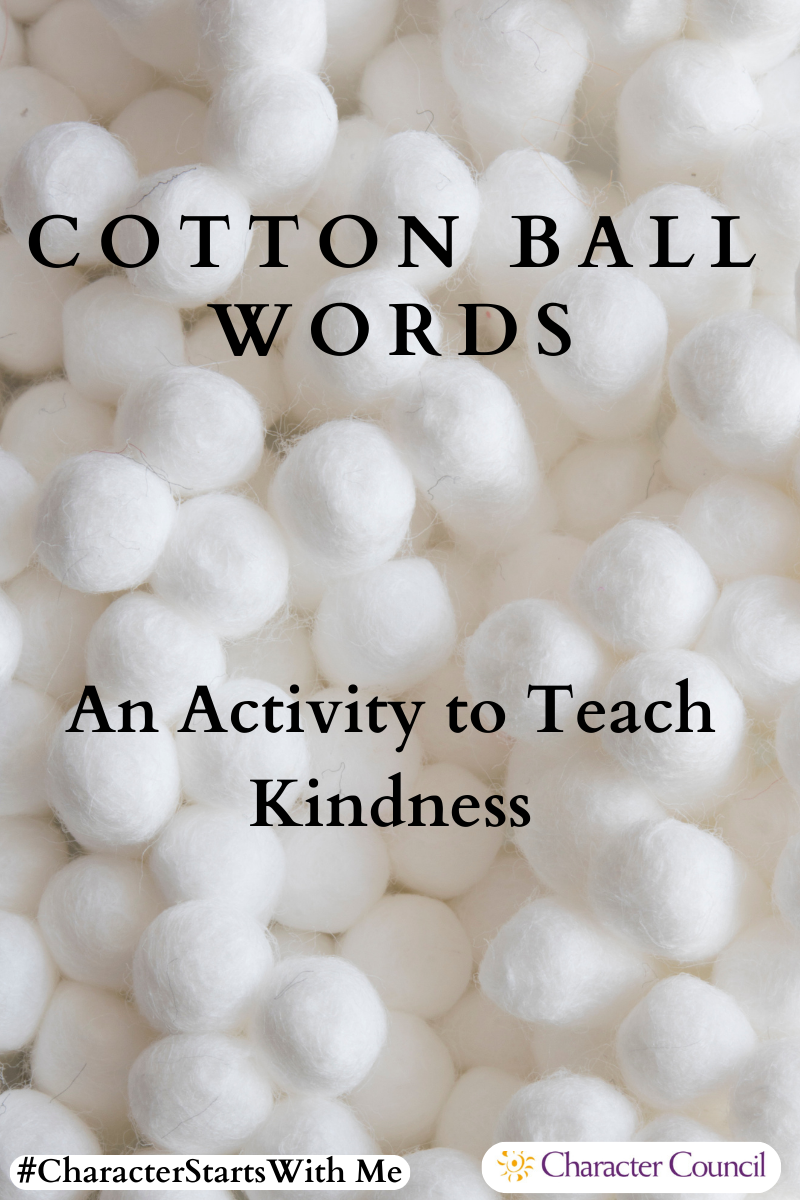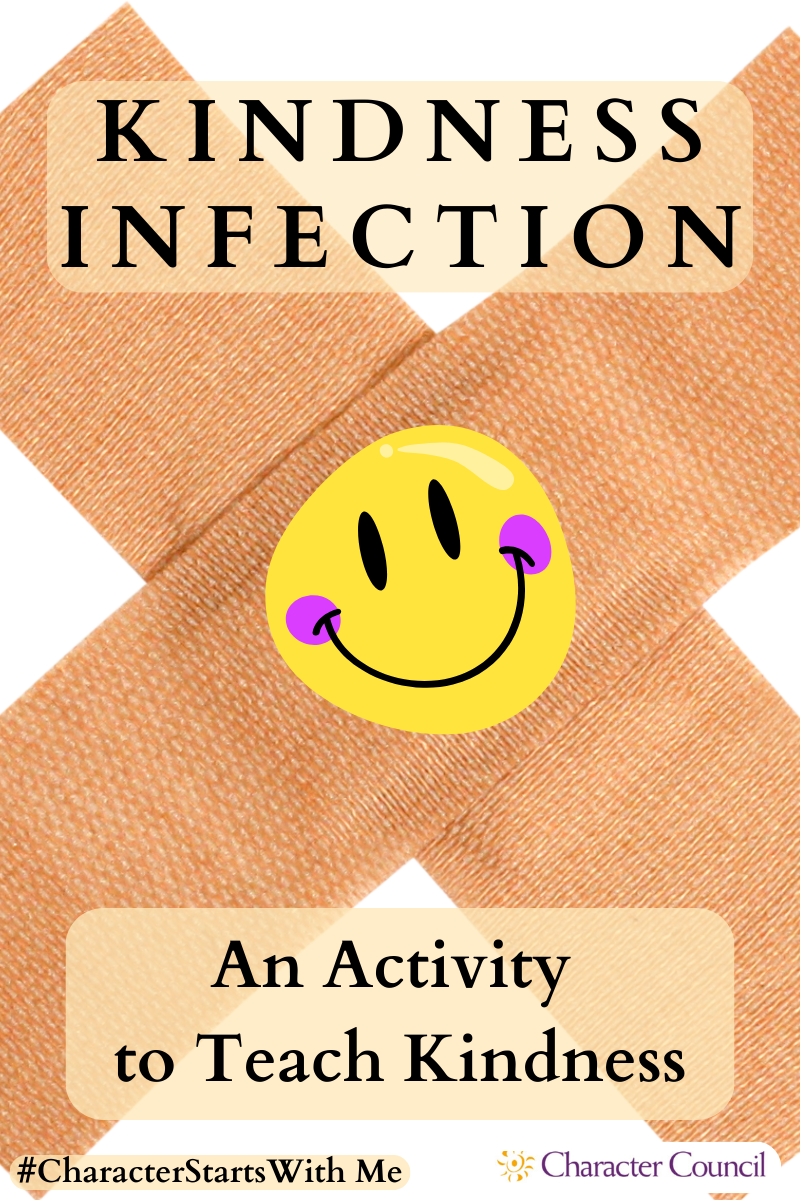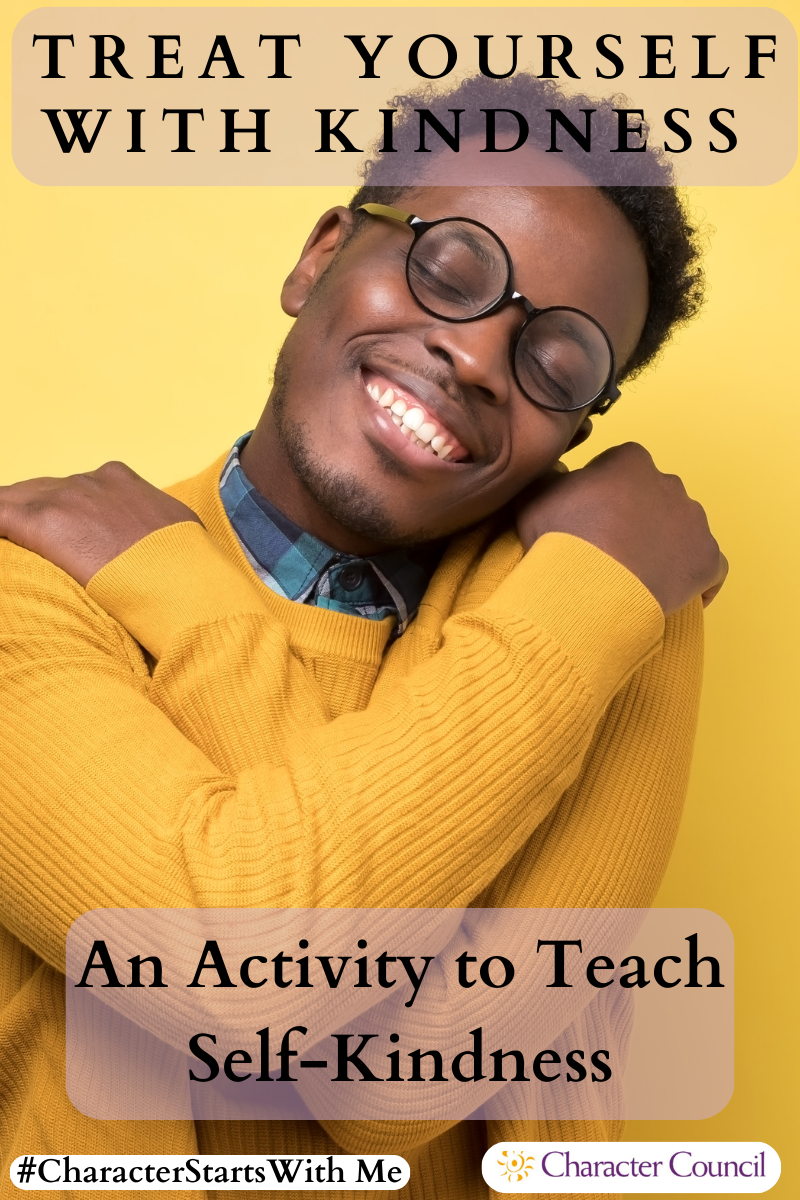
Kindness Activities
The activities here are fun ways to teach character. The game aspect makes the lesson more memorable. Each activity has processing questions at the end. Without processing the activity, the exercise is just a game. To make it a stronger lesson when you process it, relate the character quality to a core value that your organization promotes.
Consider picking a student to run the activity. You will need to give them time ahead of the activity to prepare. Another option is to pick a few students to run the activity for a younger classroom after you have run it for your class. Encourage your students to repeat it in the home for younger siblings or even parents.


Cotton Ball Words
Have an example of a cotton ball and a piece of sandpaper (the rougher, the better). Ask the students to describe each of the items. Ask them which they prefer. Have the class list things to say that would be kind, like cotton balls. If you ask them to list things to say or do that would be unkind, like sandpaper, then be certain to advise them not to name someone specifically to avoid hurting anyone. Next, get a rather large, clear jar. Make sure it is large enough to hold several/many days of kind words and behaviors. When you hear kind words or see kind actions, put a cotton ball into the jar. You decided if students can ask for a cotton ball for something they or another student has done. Let the students know that they will get a cotton ball treat when the jar is full. It’s up to you how packed you want to make it to align with time in the schedule for the treat. When you add the last cotton ball that will fit in the jar, i.e., the day before you want to have the treat, declare that the jar is full and that the treat will be tomorrow. Overnight, the cotton balls will “magically” turn into marshmallows for the class to share. If you want a full-blown cotton party, many games use cotton balls if you want to add 1 or 2 games to the marshmallow treat.
Process the activity with these or similar questions:
What did you think of this activity?
Is a cotton ball a good visual for kind words and acts?
Is sandpaper a good visual for rudeness or being mean?
How did it make you feel to see the cotton balls adding up in the jar?
What did you think of your magic treat?
Are you in the habit of saying and doing kind things?
Will you continue to say and do kind things even if there is no cotton ball jar?

Kindness Infection
Read the following poem to the class.
Smiling is Infectious by Spike Milligan
Discuss if they think smiles are contagious. Do a quick activity called Pass the Smile. Explain that you will all pass a smile around the room and describe the order it will take, i.e., across the rows, from table to table, etc. Secretly time how long it takes to pass the smile around your room. (For a math connection, you can have older students calculate how long it would take to pass it to the whole school.) Optionally, after you do it once, you can challenge them to pass it faster the second time.
Kindness Epidemic
This activity will mimic spreading kindness like the smile that was passed. You will need enough pinch-type clothespins for each student. Write smile, its synonyms, a smiley face or kindness infection – whatever your class will react to the best – on the clothespin. Go around the room and pick five students to infect by giving them a clothespin to clip on their clothes. They need to infect others in the class. Give each infected student a handful of clothespins for them to give out. You have the choice of it being obvious, like smiling at someone and giving them the clothespin, or it is secret, and they sneak to them. They will do this over the course of the day and not all at once. See how long it takes to get everyone infected. If someone is already infected, they can’t accept a new infection. Make sure there is a way for them to wear them in an obvious way, so they know who to infect. If you need to have this span more than one day, make sure the students leave their clothespins on their desks, so they have them for the next day.
Options: You can use smile stickers or large Band-Aids instead of clothespins. The band-aids should be out of their wrapper and have smiles or the word kindness written on them. Students will wear the bandaids on their clothes like a sticker. (Be aware that stickers and bandaids are not kind to some fabrics, so be sure to advise students if they are wearing something that should be stickered.)
Optional next steps: if you used clothespins, ask the students if they would like to teach this exercise to a younger class or even an older class. If you didn’t use clothespins, you would just need to acquire more stickers or band-aids for the other class.
Depending on the age of your students, you could get a small group to volunteer to plan how to do it for the whole school.
To process the activity, ask these or similar questions:
Pass the smile
- How did it feel to pass the smile around?
- Did knowing that it started with a single smile make smiles seem more important?
- How easy was it to smile when someone smiled at you?
- Will you be more likely to notice smiles after this and smile back?
- Will you be more likely to start smiling?
Kindness Epidemic
- Did you like this activity?
- Is the idea of an infection scary, having just lived through a pandemic?
- Have you ever thought about good things being contagious?
- How did it feel to receive a Kindness clothespin from someone?
- How did it feel to give a Kindness clothespin to someone?
- How would it feel to be the last one to receive a Kindness clothespin?
- Do you think it is important for each student to continually be kind to others, so no one feels left out or last?
- How did seeing the clothespins start to appear on the other students make you feel about how this class treats each other?
- Do you think that this activity will help you to remember to be more kind to everyone?

Treat Yourself with Kindness
It’s vital that we all know how to be kind to ourselves. Begin a discussion about what it means to be kind to yourself. You are looking for suggestions on how to treat yourself nicely. Try to distinguish between an occasional treat and just indulging. Things like getting enough sleep, eating properly, and taking care of your body and belongings, should also be on the list.
The following list contains affirmations that students can use to help put a positive message about themselves in their brains. Have the students pick three things from the list. Feel free to add your own ideas to the list. They also can write their own if there is something they particularly want. Older students can write three things using this list as suggestions or starters for complex ideas. Have the students write down the ones they choose and give them time every morning to read those three affirmations. For students who are not yet writing, you may want to select three from the list you say as a class every morning. You can also assign 1 to each student to memorize and quickly go around the class and state the affirmations.
- I am a good friend.
- I am a problem-solver.
- I am brave.
- I am forgiving.
- I am giving.
- I am happy.
- I am kind.
- I am peaceful.
- I am polite.
- I am positive.
- I am proud of myself.
- I am smart.
- I am special.
- I am thankful.
- I believe in myself.
- I can do hard things.
- I have good friends.
- I have great ideas.
- I work hard.
- Today, I will be kind to myself.
After you have done this for several days or weeks, process it with these or similar questions:
What do you think of the affirmations we are saying?
Are they difficult or easy to remember?
How do you feel when you say them?
Do you ever think about these affirmations any other time?
Are there different or additional affirmations you would like to say?
Do you think that saying these frequently helps remind you to treat yourself with kindness?